The Thar Desert is the largest desert in India which is why it is also called the Great Indian Desert. The desert covers more than 77,000 square miles (200,000 sq. km).
Where is the Thar desert located?
The Thar desert is located in Asia and sits on the border between India and Pakistan. The map below shows the Thar desert location in India. The majority of the desert is in the region of Rajasthan with much smaller areas extending into the Indian regions of Punjab, Haryana, and Gujarat as well as Pakistan. The desert extends into Pakistan up to the wetter areas sustained by the Indis River.
Thar desert map
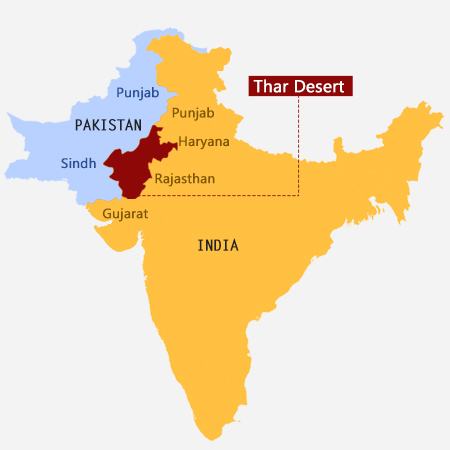
Important Thar desert facts
The Great Desert of India is a large arid region with a landscape dominated by sand dunes varying in size from 52ft (16m) in the North to 498ft (152m) in the south.
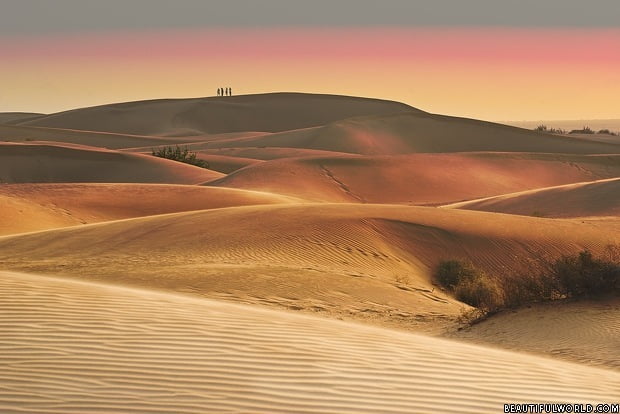
The majority of the Thar desert is in India but 15% of it is actually within the borders of Pakistan.
The age of the Thar Desert is a topic of great controversy, though most geologists agree that it is somewhere in the region of 4000-10,000 years old.
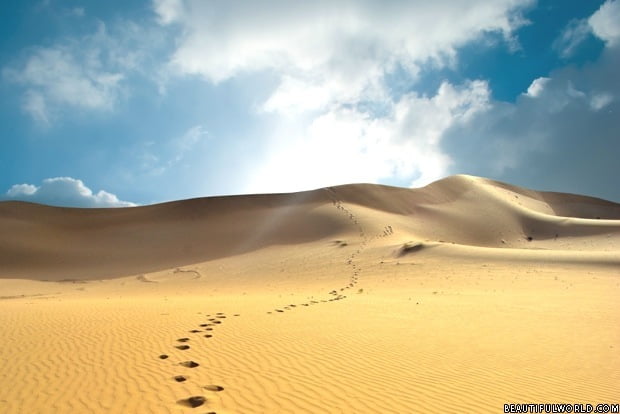
About 5,000 years ago at least one ancient civilization lived there with their main civic center being to the North near the Indus river of Pakistan at the city of Mohenjo-daro.
Despite there being a scarcity of water the Thar desert contains the historic city of Jodhpur which was founded in 1459. Today the city has a population of 1.5 million and is a popular tourist destination due to the wealth of historic monuments and buildings.
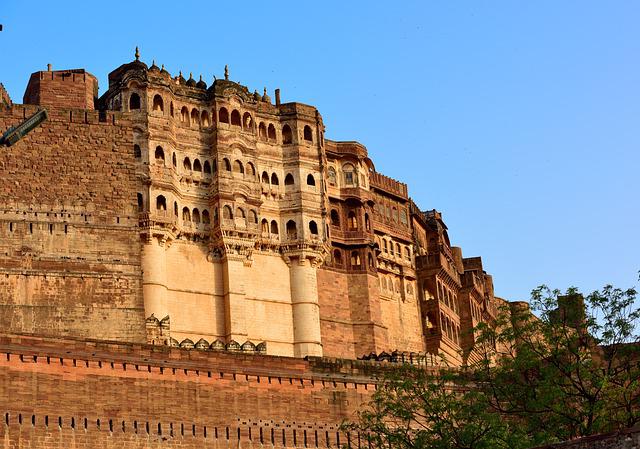
The Thar desert does not have any Oasis which is unusual compared to other large deserts. There is a single river that flows through the desert, the Luni River.
The Luni River
The Luni river starts to flow in Naga hills of Rajasthan and winds its way through Rajasthan finally spilling out into a wide shallow area of Gujara where it ends without draining into another water course or sea. For about the first 100km the water remains fresh but after that its shallow and wide path means it becomes saline. This river dries up completely in the dry season.
Interesting facts about the Thar Desert
The Thar Desert is the 18th largest subtropical desert in the world.
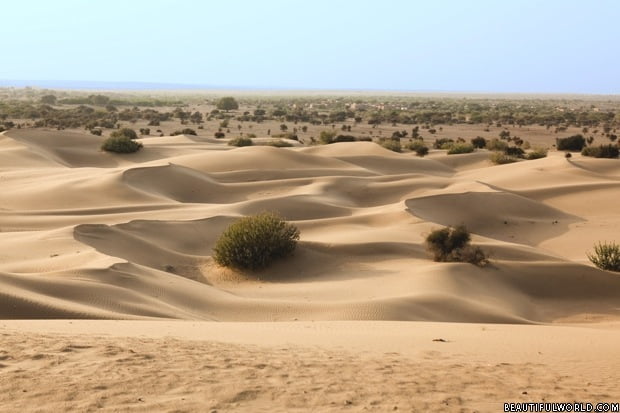
In contrast to the Sahara, which has one of the lowest population densities (1 person per sq. km), the Thar Desert is the most densely populated desert in the world (83 people per sq. km).
Most families in the Thar Desert coexist using a joint family system, meaning all generations live together in one residence. Money earned by family members becomes the common property of the family as a whole.
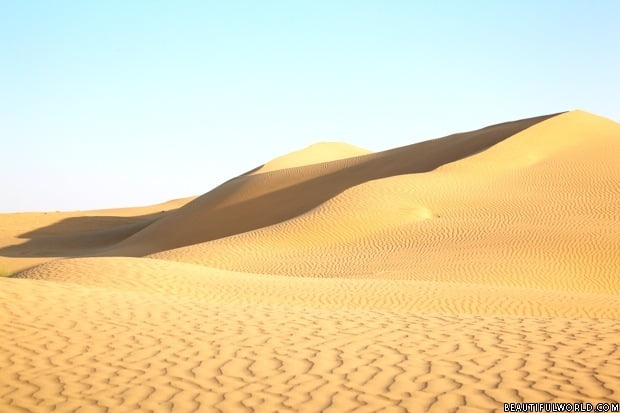
India carried out its first nuclear weapon explosion test in the Thar Desert on 18 May 1974.
Very little rainfall is experienced in the Thar Desert, with average rainfall less than 10 inches (25cm) per annum. This is distributed rather erratically, though occurs mostly between July and September.
The average temperature in the Great Indian Desert ranges from of 75 to 79 degrees Fahrenheit (24-26 degrees Celsius) in summer, to 39 to 50 degrees Fahrenheit (4-10 degrees Celsius) in winter.
Importance of the Thar desert
Unusually for a large desert, the Thar is able to support a relative abundance of mammals. Over 40 separate species inhabit this arid area.
The Thar region of Rajasthan is the biggest wool-producing area in India.
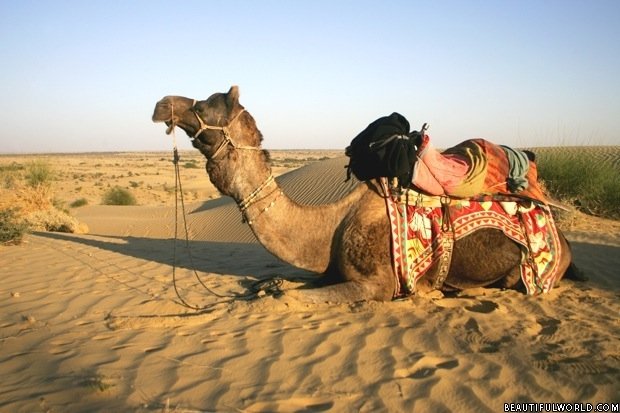
How to get to the Thar Desert
There are no international airports within the Thar desert but Jaipur International Airport is just outside its border. Another option is New Delhi’s Indira Gandhi International Airport which usually has more direct flights from international cities. From these major airports, you can get connecting flights to Jodhpur Domestic Airport which is only 5km from the city. There are also good rail links from most cities including express services linking Jodhpur to New Delhi, Suryanagari & Bangalore.
In Pakistan, there are two international airports to the South of the Indus river, Shaikh Zayed International Airport and Multan International Airport.


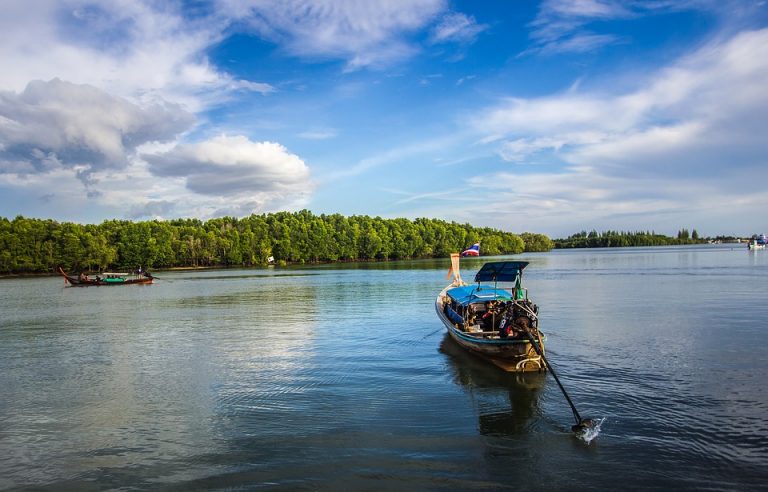
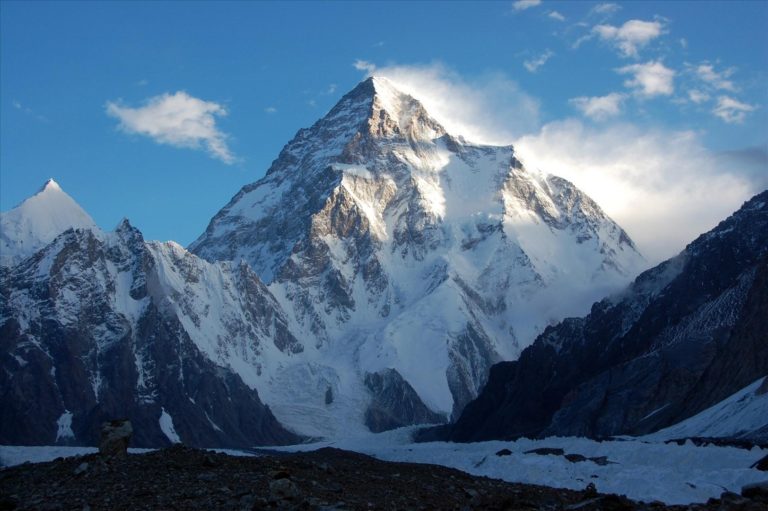

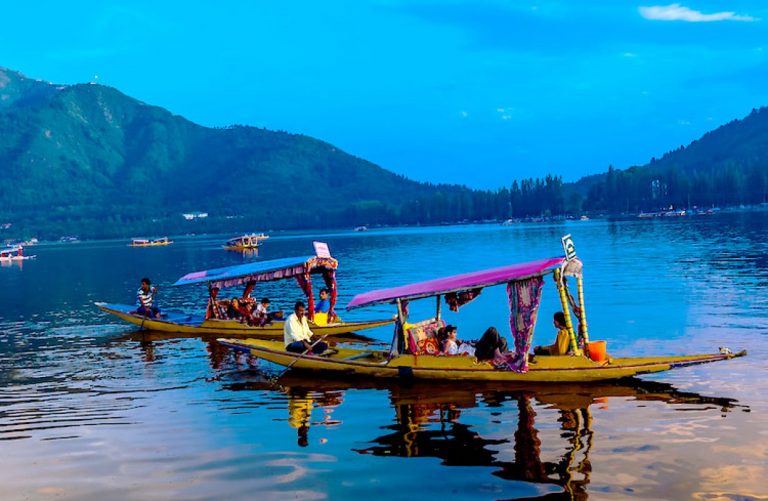
seems cool helps me with my work at school to do research. THANKYOU!
lol! same here
helped me 2 thanks
same here, THANKS!!!
same here
yup
Same helped me too
YEAH
same here
Thar desert actually forms a natural boundary between India and Pakistan?
this was awsome for a desert story we had to write in our class!!!!!
One more thing associated with Thar. A tectonic shift cut off the glacial feed to River Saraswathi around 4000bc. This river flowed 300km to the east of Rr Indus. Drying up of this river corresponds to the formation of Thar
Yeah it lands on both of their borders
thank you this helped me with a big report for school
SAME I JUST FINISHED IT AND ITS DUE TOMORROW
Do we require a visa to visit Thar desert? I was told that a carnival will be celebrated in the months Feb end towards beginning of March. Look forward to receive soame information.
what a desert !!!!!!!!!!!!!!!!!!!!!!!!!!!!!
Great website really helped me out with some tricky school work
Hi this helped a lot
nice website helped me a lot
It is a really good , nice website it really helped me In my school work thanks
Hey Guys! Great article but please make more articles on other deserts like Thar because I couldn’t find its information everywhere btw appreciate the help!
Thank you, I have just been looking for information about this topic for ages and yours is the best I have discovered till now. However, what concerning the conclusion? Are you sure concerning the supply?
Thanks you for this information help me my school project
SOOO HELPFUL, THANKS! I REALLY LIKED IT AND COOL FACTS!
thank u i finished my home work using this facts so ya you helped a lot
Thanks so much!!! It was perfect for my homework on deserts!
This helped me a lot with my heritage project
omg
Some more information for home work about the Thar Desert.
1. When India and Pakistan were one country, 100% of desert was in India
2. After Pakistan was separated from India in 1947, about 85% of the desert is in India and about 15% is in Pakistan.
3. During the winter, some nights can be freezing around 0 Celsius (32 Fahrenheit).
4. During the summer, day temperature can rise above 38 Celsius (above 100 Fahrenheit).
5. Most of the desert is in the Indian state of Rajasthan where there are beautiful dunes, mountains, colourful palaces, day and night carnivals and festivals, and even wild animals for you to enjoy.
1. “When India and Pakistan were one country” – Wrong statement. Pakistan NEVER existed before 1947. There was and is only one civilizational nation Bharat i.e. India.
2. “After Pakistan was separated from India in 1947” – Wrong statement again. Separation occurs when there exists something before the separation. Pakistan as a nation state NEVER existed before 1947. So, the correct statement is “After Pakistan was carved out of India in 1947”.
this is really helping with school work
I need help for a school assignment. What things in the Thar Desert helped the ancient settlers of India? Thank you sooo much!!
It could do with some more easy bullet point facts but other than that it was goooood!
Great explanation i like it
Any body here at 2020
2021
great help with school work
nice place but I am live near the thar desert I live in the agra
So helpful, thank you! More information on the people living there would be helpful…
Good blog. So helpful, thank you! More information on the people living there would be helpful…
This is amazing 🤩🤩🤩🤩🤩🤩🤩🤩🤩🤩🤩🤩🤩
It’s awesome thanks this help me on my file
Hey! Thank You! My family and me are planning to go to “The That Desert”. I first found it very dull and boring but now, reading this article changed my opinion. Keep It Up! And Thanks Again!!